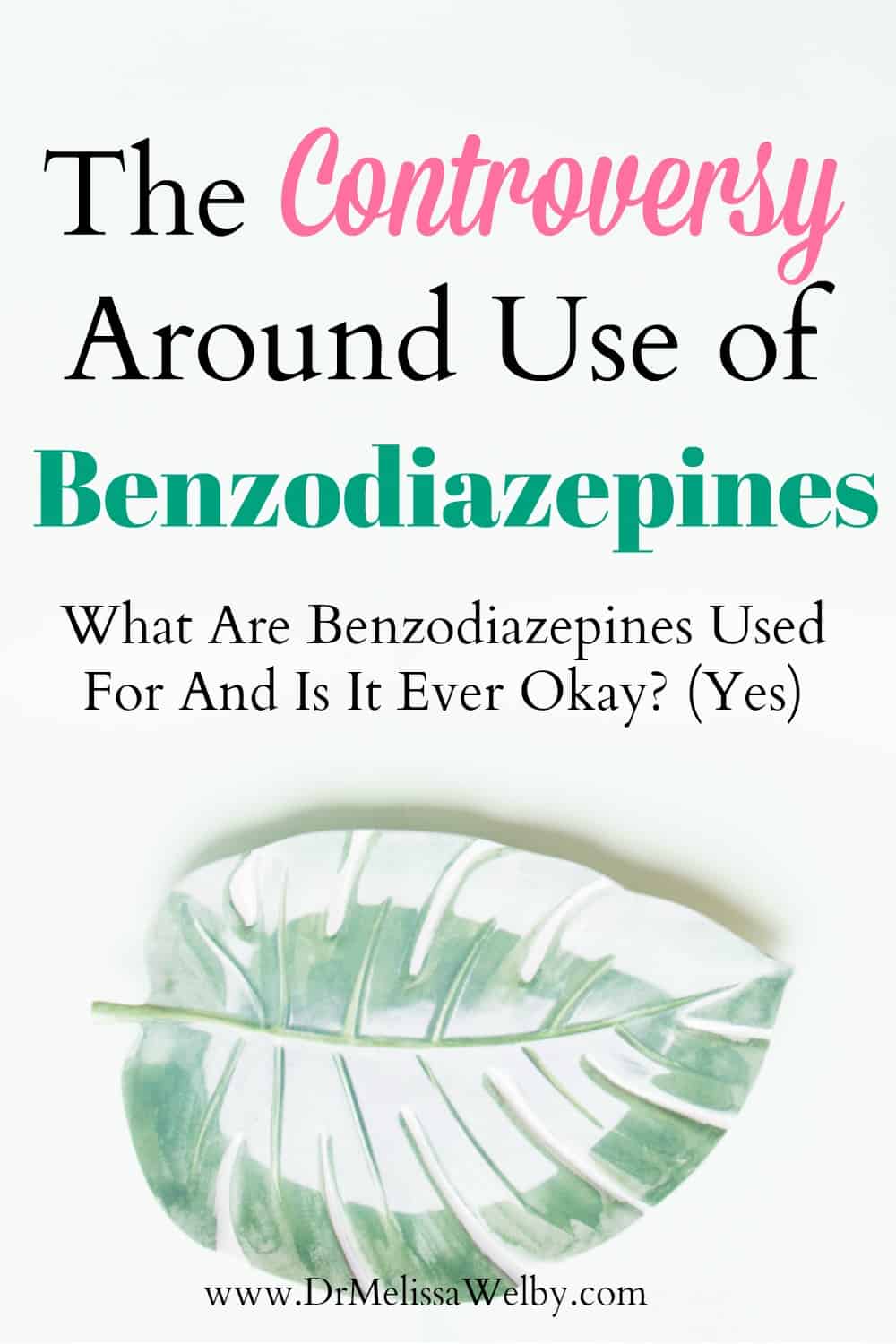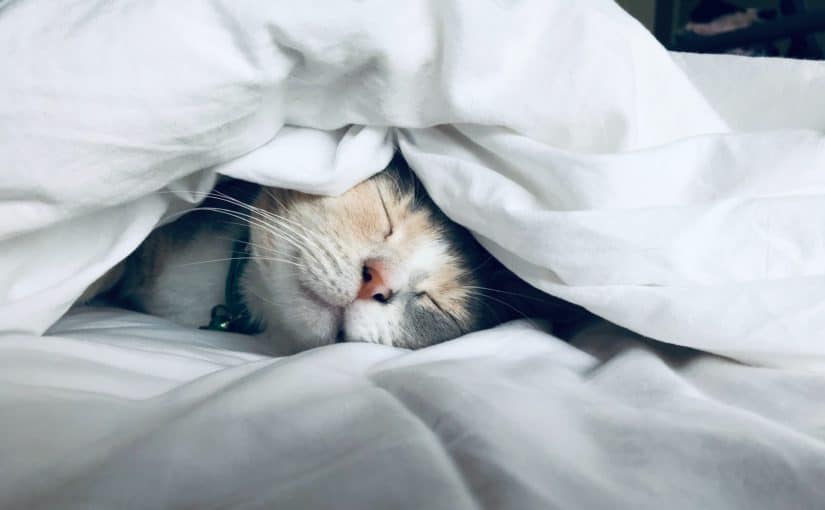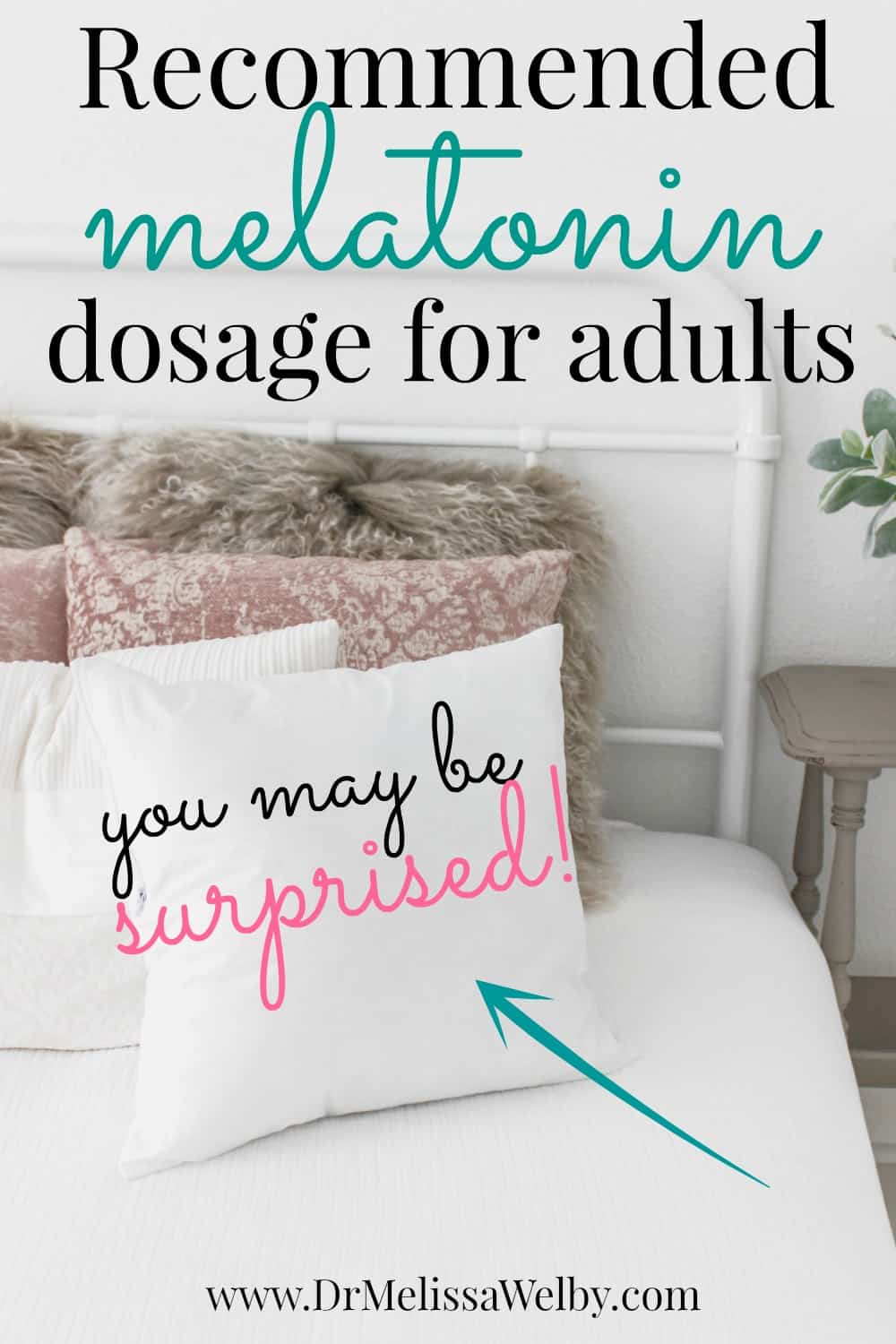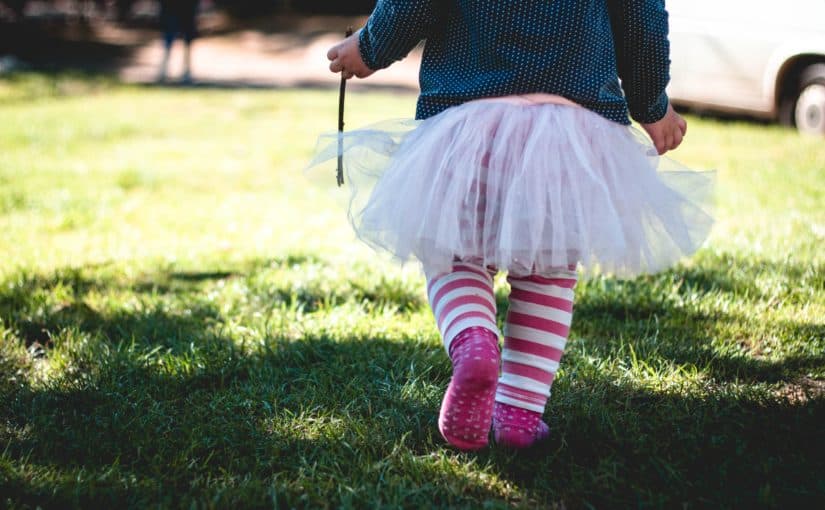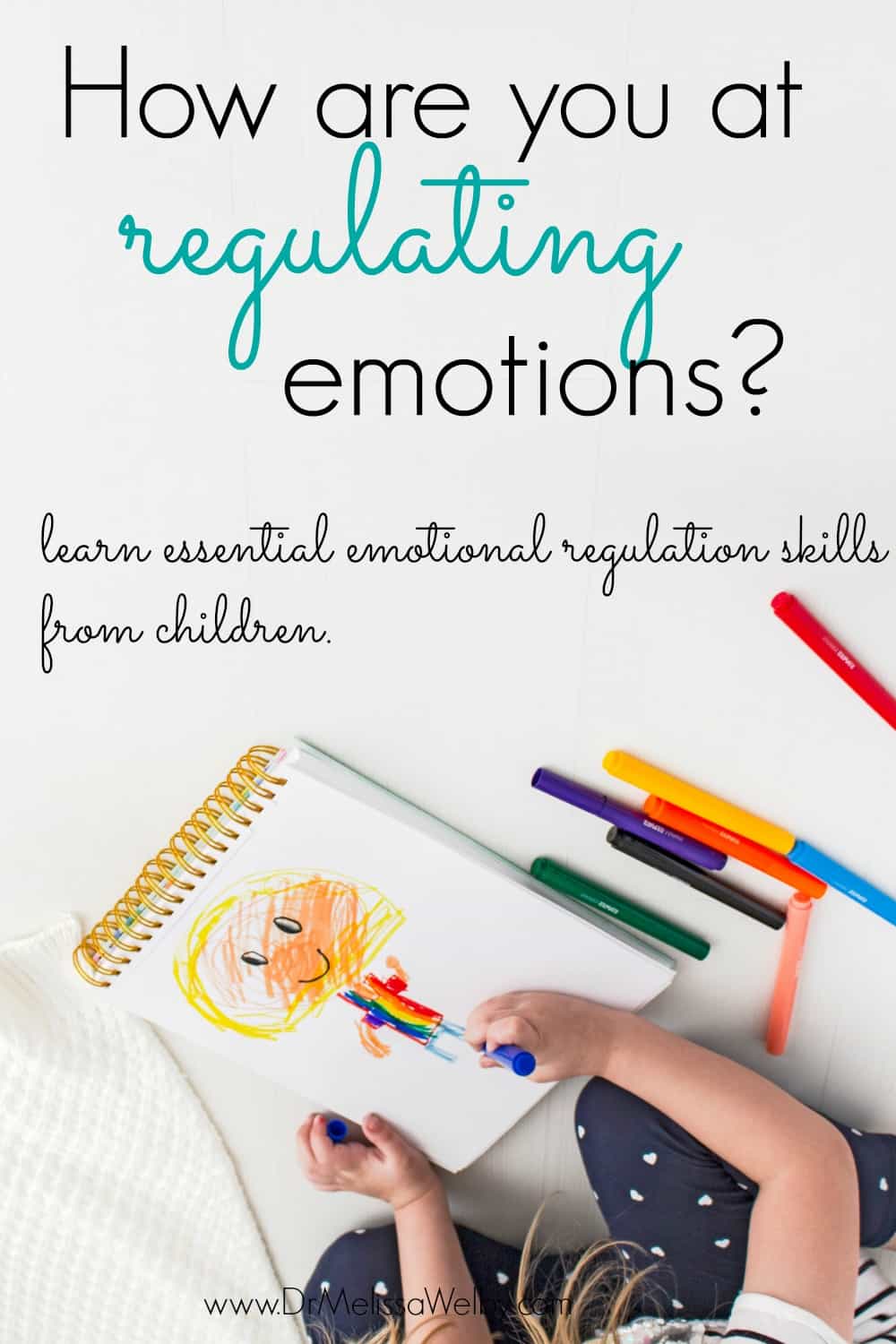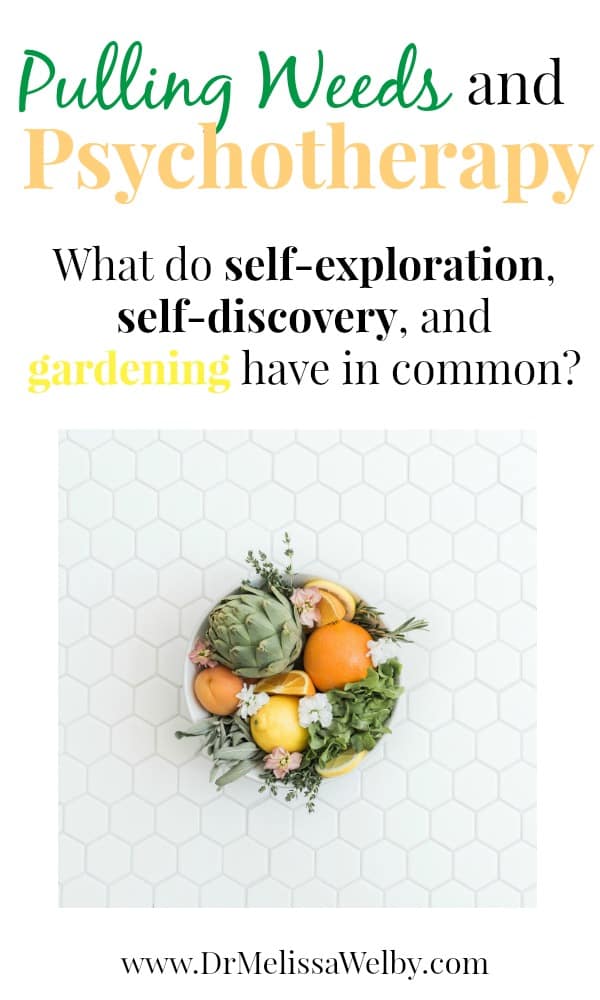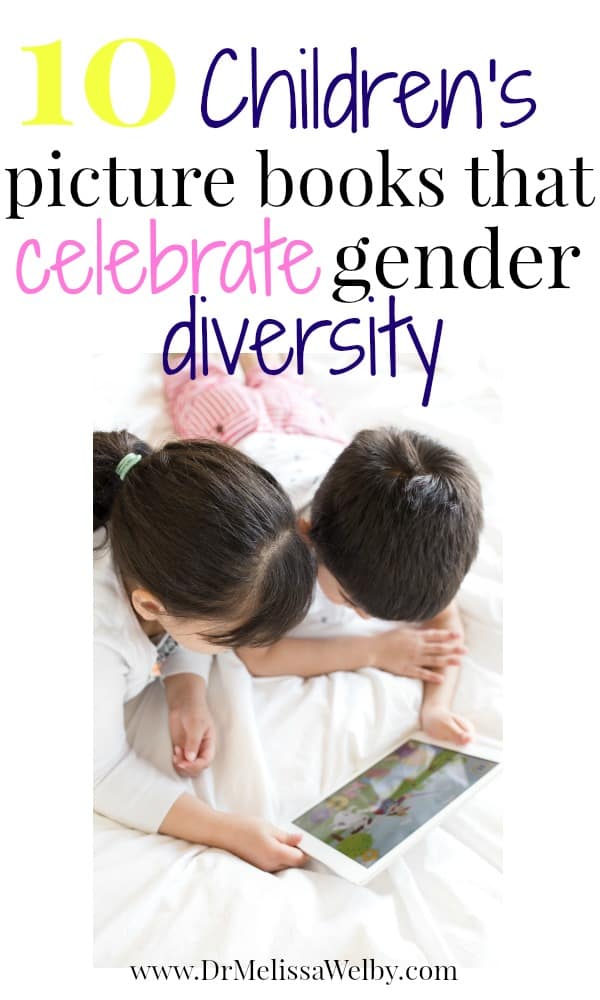Benzodiazepine medications have gotten a bad rap and there is much controversy in the psychiatric community about their use. Some people feel they should never be used and some feel they are highly useful. Like most areas of life, there is likely a middle ground- sometimes the use of benzodiazepines is essential and quite helpful…sometimes they are harmful and impede the progress of treatment. Let’s look at some situations where a benzodiazepine could be useful or could be potentially harmful. But before we do that, I will review some definitions and basics. What is a benzodiazepine? What are benzodiazepines used for? And then we can break down situations where they may be helpful for treatment or should be avoided.
Author: Melissa Welby, MD
Recommended melatonin dosage for adults: You may be surprised!
Melatonin is widely used to treat difficulties with sleep and is readily available given the lack of need for a prescription. Because it is classified as a dietary supplement (not a drug) it isn’t regulated by the FDA and there aren’t any dosing parameters set. This has led to a lack of clarity about the recommended melatonin dosage for adults. The dose people take often varies by their best guess and the pill strength sold in the store they are in. What is melatonin and should you take 3mg? 10mg? The recommendations are vague so no wonder people are confused about how to use melatonin!
How are you at regulating emotions? Learn essential emotional regulation skills from children.
Kids can teach us many things if we let them: how to play and have fun, relax more, get dirty, avoid homework yet also persevere, be compassionate and open-minded, and how to improve our emotional regulation. Today we are blessed to have a guest post by Pediatrician, Dr. Alison Escalante, who is a leader helping parents to raise kids skillfully AND enjoy it at the same time. She incorporates emotion regulation into her work, both with parents and kids, and teaches people how to regulate emotions. This post is about how we can learn our emotional regulation skills from children. Regulating emotions can be exhausting at times and I’m grateful for her willingness to teach us more about what it is and how to do it.
Effects of Antidepressant Medications: How Do You Know if it is Working?
How will antidepressants make me feel? How do I know if it is working? Before starting antidepressant medications it’s important to know what to expect; both with potential side effects but also what to look for when assessing if there is a benefit. Antidepressant medication is slow to take effect so the benefits can creep up on the person. You will not suddenly be a different person from the effects of antidepressants (and if you are then you are likely having a side effect your physician needs to know about). Antidepressants are not “happy pills”…but will hopefully treat depression so that you can get back to your normal self.
26 Symptoms of Adult ADHD: Can You Relate?
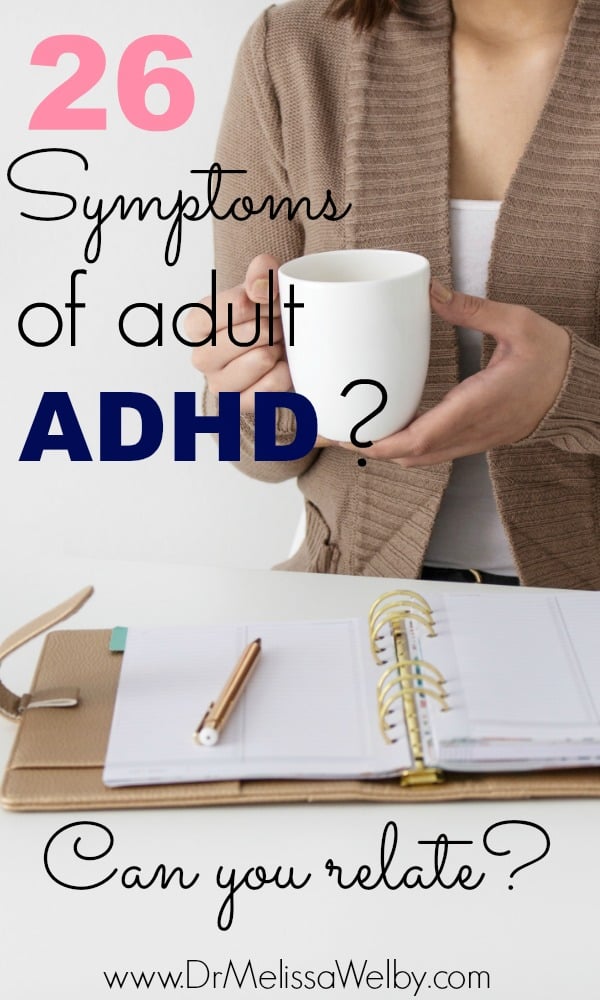
Although each person is unique, there are many common signs of adult Attention Deficit Hyperactivity Disorder (ADHD). The symptoms of adult ADHD listed below aren’t only experienced by those with the diagnosis. The difference between having ADHD or not relates to the extent of the struggles and the ways it interferes with functioning. ADHD can cause significant challenges in relationships, employment, and self-esteem for people who are not adequately treated. ADHD symptoms in adults don’t cause occasional trouble concentrating or careless mistakes…that’s normal life. Attention and focus exist on a spectrum and anyone can experience problems to some degree. Read these 26 signs of adult ADHD to learn more and see if you can relate.
Can Adults get ADHD? 5 Reasons why diagnosing ADHD in adults is legitimate

ADHD is a condition with childhood onset and cannot begin in adulthood. Can adults have ADHD? Yes! But adults don’t GET ADHD they have always HAD it and just never received the diagnosis as children. Sometimes people don’t begin to struggle with ADHD until adulthood as each person has a different point when symptoms begin to overwhelm their ability to function smoothly. Diagnosing ADHD in adults requires an understanding not only of current struggles but also of childhood history. Does ADHD go away? No, it doesn’t, but external demands, symptoms, and coping skills evolve over time. Get evaluated if you think this is something you may struggle with! Like with children, adults with ADHD often need treatment for their symptoms.
Esketamine (Spravato) for Treatment-Resistant Depression: Will it Live Up to Expectations?
The FDA’s recent approval of Esketamine (Spravato by Janssen Pharmaceuticals) has been met with much excitement (and some controversy) for it’s potential to help people with treatment-resistant depression. Despite it being a potentially life-threatening condition treatment-resistant depression medication options are limited. 12-20% of people diagnosed with major depression don’t respond to conventional antidepressant treatment.
(adsbygoogle = window.adsbygoogle || []).push({});
According to the National Institute of Mental Health (NIMH) “depression is responsible for up to 70 percent of psychiatric hospitalizations and about 40 percent of suicides.” Here is more of what they say:
Each year, 9.5 percent of the population, or about 20.9 million American adults, will struggle with depressive illness. MDD is a recurring and chronic illness, frequently returning for two or more episodes, with episodes that often last two years or more. Depression is currently the fourth most disabling illness worldwide, and according to the World Health Organization, it will be the second leading cause of disability by the year 2020. About 10 percent of men and up to 25 percent of women will experience depression in their lifetime.
What is Treatment-resistant depression?
Treatment-resistant depression is defined as patients with Major Depressive Disorder that haven’t responded to treatment despite trying at least 2 antidepressants (at adequate doses for an adequate duration) during the current episode of depression.
How is Esketamine different from Ketamine?
You may have already heard of ketamine, an FDA-approved anesthetic that has been around for decades. On a darker side, Ketamine is known as “Special K”, an illegal hallucinogenic club drug that is infamously considered one of the more common date-rape drugs.
Ketamine is prescribed “off-label” for treatment-resistant depression at Ketamine infusion centers where a person goes to get an intravenous (IV) infusion of the medication. These centers have been gaining in popularity across the country and are available to those who can afford the treatment.
Esketamine is like a cousin to Ketamine.
Because Ketamine isn’t FDA approved for depression insurance coverage is spotty or non-existent. This means that patients desperate to feel better are spending a ton of money to get treatment. With FDA approval for Esketamine, one hope is that insurance will begin to cover this costly, but potentially life-saving treatment. Each session is estimated to cost $590-$885.
(adsbygoogle = window.adsbygoogle || []).push({});
Facts about Esketamine (Spravato):
- Esketamine (Spravato), a nasal spray, is a schedule III controlled substance because of its potential for abuse and misuse.
- Esketamine will be highly regulated because of the concerns about abuse. It has to be given at a treatment center under supervision and cannot be taken home.
- This medication works on NMDA receptors in the brain targeting glutamate. Traditional antidepressants target the serotonin, dopamine, and norepinephrine systems.
- The mode of action as an antidepressant is still considered unknown.
- Esketamine is used in conjunction with starting a new (for the person) oral antidepressant. It was not studied without an antidepressant.
- Prior to treatment, a person is not allowed to eat for 2 hours or drink for 30 min.
- Once dosed, it reaches maximum concentration within 20-40 minutes and effects can be felt within hours. This is vastly different than the effects from typical antidepressants which take weeks to months to provide benefit in those that respond.
- A person receiving treatment must be monitored at the medical office for at least 2 hours before they are able to leave.
- Esketamine may impair attention, judgment, reaction speed, and motor skills so after treatment person is not allowed to drive or operating machinery until the next day
The current treatment regimen for Esketamine (Spravato):
- 2 times per week for 4 weeks,
- then 1 time per week for 4 weeks,
- then 1 time every 2 weeks for 4 weeks
The optimal treatment schedule (includes deciding which dose to use 56mg vs 84mg, dosing frequency, and length of treatment/maintenance) will likely only be determined with more experience with this medication.
Studies of the effectiveness of Esketamine:
This is where some of the controversies around Esketamine’s fast-track FDA approval come in. Results are promising but mixed in terms of effectiveness. Only 1 of 3 short term trials showed statistically significant benefits and these benefits were not long lasting (“some effect at 2 days”).
The long-term trial did show that for patients that were stabilized by Esketamine, they had a longer time until the return of depressive symptoms (51%) as opposed to if they received an inactive (placebo) nasal spray.
(adsbygoogle = window.adsbygoogle || []).push({});
Some people feel that the risks of abuse and lack of robust evidence didn’t warrant the approval by the FDA. However, others feel the approval was justified because treatment-resistant depression medication options are so few for an illness which can be life-threatening.
Clearly, more data is needed on short-term and long-term effectiveness and the ideal maintenance plan. Perhaps, as the optimal treatment and maintenance schedules are defined, there will be improvements in long-term efficacy data.
Potential Side Effects of Esketamine:
- Dissociation (difficulty with attention, judgment, and thinking)
- Sedation, decreased feeling or sensitivity, lethargy, feeling drunk
- Increased blood pressure
- Dizziness, vertigo
- Anxiety
- Nausea, vomiting
Per Janssen:
Most adverse events were mild or moderate in severity, and were typically observed on nasal spray dosing days, and generally resolved the same day.
Will Esketamine (Spravato) live up to expectations?
Pulling weeds and psychotherapy: What do self-exploration, self-discovery, and gardening have in common?
As winter dredges on I find myself beginning to think about spring and the joys of planting a garden. Spring is one of my favorite times of the year, where life grows out of everything that appears dead. Buds pop from the clusters of sticks that are my hydrangea plants, and sprouts come out from the soil where bulbs have been waiting to give life. It’s a time full of hope, renewal, and opportunities for positive growth. Reflecting on the wonders of spring got me thinking about how psychotherapy works and the growth opportunities that emerge from both. The fresh start of spring parallels the opportunities for positive growth and self-exploration we have in our own lives: rejuvenation, inspiration, self-discovery, and beauty. The roots of psychotherapy are wrapped up in the basics of gardening.
(adsbygoogle = window.adsbygoogle || []).push({});
How psychotherapy works: What’s under the surface?
Looking out into my back yard, my raised beds are lying in wait for spring; piles of dirt with the remains of a few dead plants and weeds that won’t give up. Under the surface, the beds are full of roots: some big or small, deep or superficial. They form the intricate network of the past and the future; the remains of a previous life and the foundation for what is to come.
Our life experiences lay down roots inside us: networks of patterns, habits, and automatic reactions. Sometimes the roots are more like weeds forming the basis of worry thoughts, PTSD, or ineffective coping skills. But other roots are what we can fall back on: the building blocks that make us who we are, our resiliency, drive, and passions.
Self-exploration and the roots of life: Some wanted, some not
Unwanted roots grow pesky weeds. Remove them as I may, they come back as soon as I stop being vigilant. The only way to eliminate these weeds is to work harder to dig down and get them at the root. Though it is impossible to create a permanently weed-free space, once the root is eliminated, the network can be minimized and dealing with them as they arise will prevent a major problem.
Think, for example, what happens when the roots of addiction are present. Ongoing attention to self-care and recovery are required or addiction can pop up to the surface and produce its ugly fruit again. Without digging down and eliminating as many of the roots as possible, addiction will grow under the surface and pop through once it is strong enough.
Growth opportunities: Self-care isn’t a one time job
There are outside influences that invade my weed-free garden space. Seeds and grass clippings blow into the garden and the process of weeds choking out the good starts over. Weeds are hearty and some will find a way to survive.
(adsbygoogle = window.adsbygoogle || []).push({});
If we can’t eliminate the negative roots, we can have a maintenance plan to keep them in check.
As much as we take care of ourselves, there will always be bumps and bruises that come with life. If we can accept this, it makes the process of recovery easier. Instead of putting our energy into thinking about the unfairness of it all we could more quickly and effectively address the fact that “weeds happen” and move forward. This is a growth opportunity for us. Life evolves so we need regular maintenance to nourish the parts that are positive and quickly deal with what holds us back.
Self-discovery: The beauty of roots
The roots under the surface don’t only bring unwanted chores and negativity, they are also the lifelines to the plants that bring beauty and fulfillment. These roots give life to perennial strawberries and flowers, and they also form the basis of who we are. They drive our interests, passions, depth of experiences, resiliency, humor, and the ability to explore and trust.
If we steadily maintain and minimize the weeds in our lives we allow what fulfills us to spend more time in the sun not being crowded out or shaded by negatives.
Opportunities for positive growth: Building blocks of life
10 Children’s Picture Books that Celebrate Gender Diversity
One of my most important jobs as a parent is to allow my children to have the freedom to discover and be their true selves. I want them to find their passions, inner drive, believe in themselves, and have the resilience to keep moving forward despite the natural adversity life presents. I believe it is important to surround children with love and acceptance from the start and the rest of their lives will fall into place from there. What career they ultimately chose is far secondary to the importance of how they feel about their life and themselves. Part of how I do this is to make sure we incorporate books in the house that celebrate diversity and present many different role models of people being who they are and standing up for what they believe in. Here are my recommendations and reviews for 10 children’s picture books that we have read that celebrate gender diversity in children and encourage children’s play free from gender role stereotypes.
These books are geared towards readers 4-8 years old (preschool-3rd grade). My favorites on the list normalize diversity of gender identity in children and encourage readers to play and discover what they like. These books help surround children with messages of acceptance and support for themselves and each other.
The Reviews:
I read these books with my 3 children age 8, 11, and 12 and hoped that they could add their perspective on the books to benefit all of you. But beyond each child choosing a different favorite book (and all were predictable based upon their different personalities), their feedback was basically “I like them all”. Hopefully, I can give you a few more thoughts on each book so you can judge what your child may like the most. We have chosen 6 of the 10 books as our “family favorites”.
1. I am Jazz: *A family favorite
By Jessica Herthel and Jass Jennings
I am Jazz is a true story about a transgender girl, Jazz, and her process of being appreciated for herself. Jazz touches on her love of stereotypically girl things, and her “girl” thoughts and dreams. She doesn’t receive universal support but has good friends and family that embrace her. Jazz believes that being different is special and what a person is like inside is what matters most.
This book touches on the struggles Jazz went thru but doesn’t focus on them. There is no overt bullying expressed in the book but teasing in school in mentioned. Although the book has gender role stereotypes of “girl things” this is Jazz’s story and speaks to what she herself loves and identifies with. Overall, I think its a great book.
This was the favorite book of my 11-year-old who loves everything “stereotypically girl” and would sprinkle glitter everywhere if allowed.
[amazon_link asins=’0803741073′ template=’ProductLink’ store=’drmelissawelb-20′ marketplace=’US’ link_id=’29ccc319-34f1-41a0-b0e9-488a9919d9e7′]
From the book insert:
“From the time she was two years old, Jazz knew that she had a girl’s brain in a boy’s body. She loved pink and dressing up as a mermaid and didn’t feel like herself in boys’ clothing. This confused her family, until they took her to a doctor who said that Jazz was transgender and that she was born that way. Jazz’s story is based on her real-life experience and she tells it in a simple, clear way that will be appreciated by picture book readers, their parents, and teachers.”
2. Jacob’s New Dress:
By Sarah and Ian Hoffman
Jacob identifies as a boy who loves dresses. This book challenges the notions of gender roles stereotypes and supports gender diversity. Jacob’s New Dress has great illustrations and normalizes dress-up and using your imagination.
I wish there was less initial negativity by family and schoolmates about what is “allowed” for a particular gender. The family ends up coming around and despite bullying at school, Jacob has a good friend who supports him. In the end, Jacob outsmarts his bully and teaches him a lesson. The book ends on a happy note.
[amazon_link asins=’0807563730′ template=’ProductLink’ store=’drmelissawelb-20′ marketplace=’US’ link_id=’a45cc8cc-7327-437a-8cc3-04edf178bda0′]
From the book cover:
“Jacob loves playing dress-up, when he can be anything he wants to be— a pirate, a bird, a fireman! But he also wants to just be himself and wear his favorite thing…a dress! Now Jacob has a new dress that he made himself, and what he wants most of all is to wear it to school. Will Mom and Dad let him? This heartwarming story speaks to the unique challenges faced by boys who don’t identify with traditional gender roles.”
3. My Princess Boy:
By Cheryl Kilodavis
The overall message of My Princess Boy is accepting and supporting children however they dress or express themselves. The Princess Boy receives refreshingly enthusiastic acceptance of his love of wearing dresses. His dad tells him how pretty he looks and his older brother dances with him. The illustrations allow the reader to use their imagination and demonstrate joy.
Overall, I like this book although it does introduce the concept of gender non-conforming kids being laughed at.
[amazon_link asins=’1442429887′ template=’ProductLink’ store=’drmelissawelb-20′ marketplace=’US’ link_id=’31407c05-12e8-4bf9-9822-ea337d792f6d’]
From the book cover:
“This little boy loves the color pink, and sparkly things. Sometimes he wears dresses, and sometimes he wears jeans. He likes to wear his princess tiara, even when climbing trees. He’s a Princess Boy, and his family loves him exactly the way he is.
Inspired by her son, and by her own struggles to initially understand, this is one mother’s story about unconditional love, and one remarkable family.”
4. 10,000 Dresses:
By Marcus Ewert
10,000 Dresses is a beautiful children’s picture book about becoming the person you dream of; the person you feel you are inside despite what other’s say. The main character, Bailey, has an amazing imagination and dreams of the most creative dresses possible. Each time Bailey tells the family about them they say “boys don’t wear dresses”, or “That’s gross. You’re a boy!”
Bailey ends up making a friend and they create beautiful dresses together. This is great, however, the problem I have is this older girl is a stranger who lives nearby. I wish the support could have been from within Bailey’s family or network. We don’t usually teach our kids to go into the homes of strangers!
[amazon_link asins=’1583228500′ template=’ProductLink’ store=’drmelissawelb-20′ marketplace=’US’ link_id=’0dce4783-e8c7-44cb-aa85-89232c35e40d’]
From the book cover:
“Every night, Bailey dreams about magical dresses: dresses made of crystals and rainbows, dresses made of flowers, dresses made of windows. . . . But when Bailey’s awake, no one wants to hear about these beautiful dreams. Then Bailey meets Laurel, an older girl who is inspired by Bailey’s imagination and courage. In friendship, the two of them begin making dresses together… and Bailey’s dreams come true!”
5. Annie’s Plaid Shirt *A family favorite
By Stacy B. Davids
A positive book written about Annie’s love of her plaid shirt and how she handled the pressure of wearing a dress to an upcoming wedding. Her mom initially insisted that girls wear dresses to weddings but Annie and her brother created their own solution. The siblings make a white suit that she wears her plaid shirt under. Annie’s mom ends up supporting her wholeheartedly and says her suit is perfect.
This is a simple book with a positive, fun ending. This book does not dwell on negativity.
[amazon_link asins=’0692512454′ template=’ProductLink’ store=’drmelissawelb-20′ marketplace=’US’ link_id=’90caa2ec-69c9-46d1-b614-a36aff267312′]
From the book cover:
Annie loved her plaid shirt and wears it everywhere. But one day her mom tells Annie that she must wear a dress to her uncle’s wedding. Annie protests, but her mom insists and buys her a fancy new dress anyway. Annie is miserable. She feels weird in dresses. Why can’t her mom understand? Then Annie has an idea. But will her mom agree?
6. Neither *A family favorite
By Arlie Anderson
This was the favorite book of my 8-year-old and we have read it numerous times. It is also one of my favorites.
Neither introduces tough topics like diversity, inclusion, and fitting in and presents them with pictures of adorable bunnies and chicks. Neither is about a land of “This and That” where everyone fits into a binary (either/or) category until “Both and Neither” come along.
The bunnies and chicks don’t want to accept “Both and Neither” and tell them to go to the land of “Somewhere Else”. “Somewhere Else” ends up being a much more fun place where all the brightly colored fun animals are accepted. Soon enough, others from the land of “This and That” come to join them at this new place where everyone fits in.
[amazon_link asins=’1631981390,0803741073,0692512454,0807563730,1785927280,0316547697,155152709X,1508846448,1583228500,1442429887′ template=’ProductGrid’ store=’drmelissawelb-20′ marketplace=’US’ link_id=’221b783d-bc73-4db8-81a1-2b90dc7c765a’]
From the book cover:
Only two kinds live in the Land of This and That. Can Neither find a home where all kinds live together?
7. From the stars in the sky to the fish in the sea *A family favorite
by Kai Cheng Thom
This is another favorite of mine written about a baby, Mui Lan, who couldn’t decide what to be (boy, girl, bird, fish, cat…). Each day, the mom sings the baby a loving song full of acceptance and openness encouraging the baby to be anything they dream of being.
When Mui Lan was school aged they showed up to school with a tail of peacock feathers and tiger stripes. Everyone else at school was either a boy or a girl and at first, Mui Lan had a hard time making friends and felt sad. With the unwavering love and acceptance of their mom, Mui Lan kept returning to school and ultimately taught the other kids how they could have their own magical qualities.
[amazon_link asins=’155152709X’ template=’ProductLink’ store=’drmelissawelb-20′ marketplace=’US’ link_id=’8f891da6-9a69-442a-8805-c89311f07c9e’]
From the book cover:
In the magical time between night and day, a child is born in a little blue house on a hill. And Miu Lan is not just any child, but one who can change into any shape they can imagine. The only problem is they can’t decide what to be: a boy or a girl? A bird or a fish? A flower or a shooting star? But they find comfort in the loving arms of their mother, who always offers them the same loving refrain: “whatever you dream of / i believe you can be / from the stars in the sky to the fish in the sea.” Miu Lan faces many questions about who they are and who they may be. But one thing’s for sure: no matter who this child becomes, their mother will love them just the same.
8. Sid doesn’t feel like a boy or a girl!
Side Effects of ADHD Medication in Adults: Watch For the Crash!
The goal of ADHD treatment with stimulant medications is to find a medication that is both effective and has no (or minimal) side effects. Sometimes it takes a couple of different medication trials before finding the best treatment. Most ADHD medication side effects in adults are minor but one side effect, “crashing”, can be so disruptive the person will have to switch medications or stop altogether.
Wondering if you or a loved one have ADHD? Take this free ADHD symptom test to help you recognize the signs and symptoms of Adult ADHD:


